Recent Articles
Popular Makes
Body Types
2020 Ford Ranger vs. 2020 Chevrolet Colorado
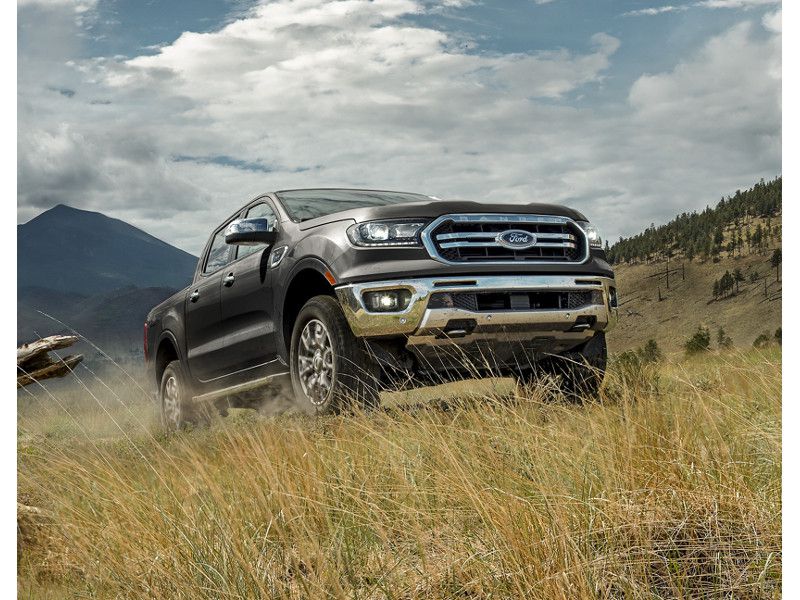
2020 Ford Ranger ・ Photo by Ford
Ford vs. Chevy. It’s one of America’s great rivalries, like the Hatfield and McCoys and the Yankees and the Red Sox. The two automotive giants have been fighting it out for over 100 years, and their pickup trucks have been broiled in battle since 1918. In the last half-decade, gasoline has been thrown on that fire, with both brands introducing new mid-size pickups.
In 2015, Chevrolet introduced the second generation of the Colorado (still on sale today), and just last year, after a seven-year hiatus, Ford reintroduced the Ranger to the U.S. market. These small trucks don’t offer the size, power, and capability of their full-size showroom mates, the Chevrolet Silverado and the Ford F-150, but they’re not afraid of a hard day’s work. Plus, they’re generally more affordable than their bigger brothers and they’re easier to live with on a daily basis, especially if you live in an urban area. But which is best? Let’s examine the 2020 Ford Ranger and 2020 Chevy Colorado in key areas and decide.
Styling and Design
Chevy really hasn’t redesigned the Colorado since 2015. The truck is still attractive, but it’s also quite familiar at this point, and doesn’t turn as many heads as it once did. Its overall design is a bit more aggressive than the Ranger’s, and it appears wider on the road although the Ford is actually the wider of the two. Three body styles are available. And the off-road-ready ZR2 model, which packs big flared fenders, just looks cool.
Ford reintroduced the Ranger in 2019. Although it was new to the American market, Ford had been selling the truck in other countries since 2011, so it’s not exactly a fresh design. It’s also attractive, but it’s only available in two body styles and its overall look failed to break new ground in the segment.
Chevrolet Colorado
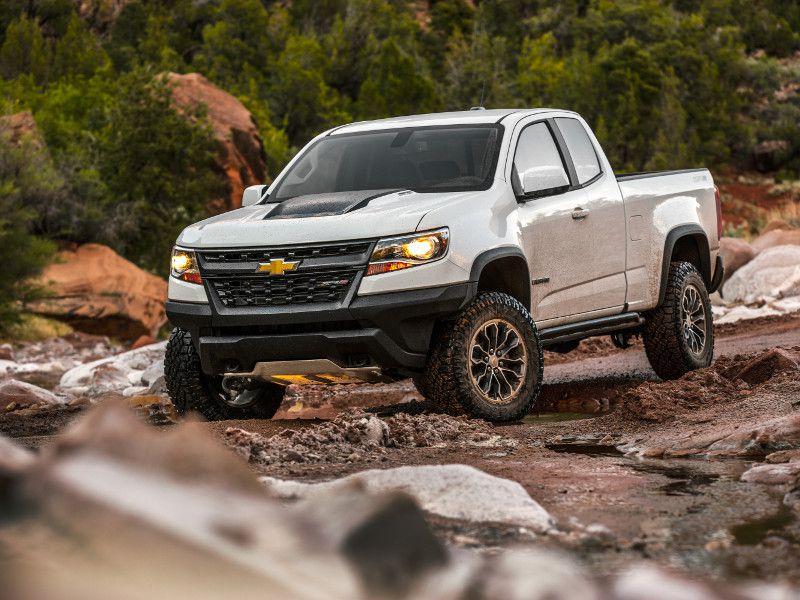
Photo by Chevrolet
Comfort and Cargo
These are two very comfortable trucks. Their seats are well designed, their cabs are quiet, and their driving positions don’t break your back after a few hours behind the wheel. Still, we find the Chevy to be just a bit more comfortable. Comfort is of course subjective, but we give the Colorado the edge in this category.
Both trucks offer 5-foot or 6-foot beds, but Ford limits the popular crew cab body style to the smaller of the two. Chevrolet does not. Depending on the trucks spec, the Colorado’s payload ratings range from 1,342 to 1,569 lbs while the Ranger’s maximum payload ranges from 1,609 to 2,128 lbs. The two can tow about the same amount of weight. Every Ranger can handle 7,500 lbs, while the Chevy tops out at 7,700 lbs with its optional diesel engine, 7,000 lbs with its available V6, and just 3,500 lbs with its standard four-cylinder.
Tie
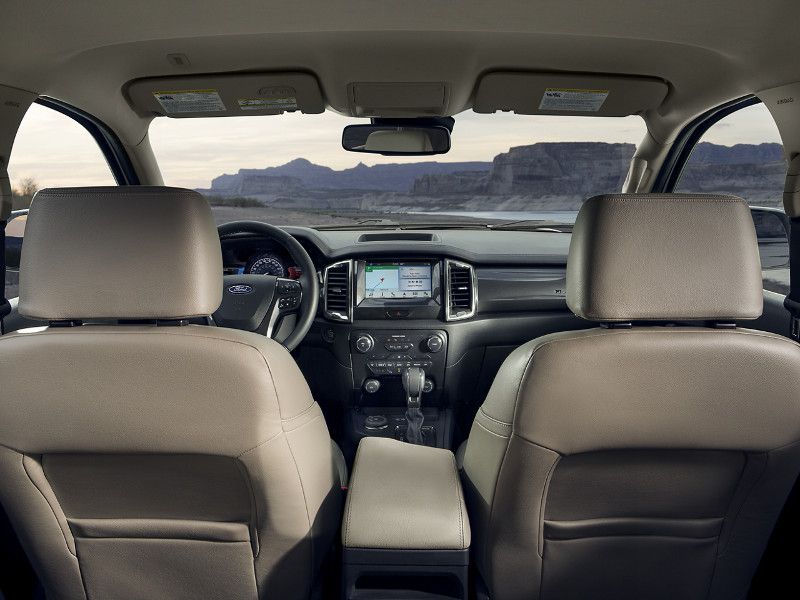
Photo by Ford
Infotainment System
Chevrolet equips the base Colorado with a 7-inch touchscreen, while the LT, Z71, and ZR2 models get an 8-inch unit. Navigation is available, and standard features include a 4G Wi-Fi hotspot, Android Auto, and Apple CarPlay. Wireless smartphone charging is standard on the Z71 and ZR2. The Chevy’s infotainment system is quick and very intuitive to use.
Every Ranger gets a 4G Wi-Fi hotspot, and the top two trim levels get Ford’s Sync 3 infotainment system with an 8-inch touch screen and navigation. The system also features Android Auto, Apple CarPlay, and Amazon Alexa compatibility, but it’s a little slower to respond than the Chevy’s. The two systems offer similar graphics quality and features.
Tie
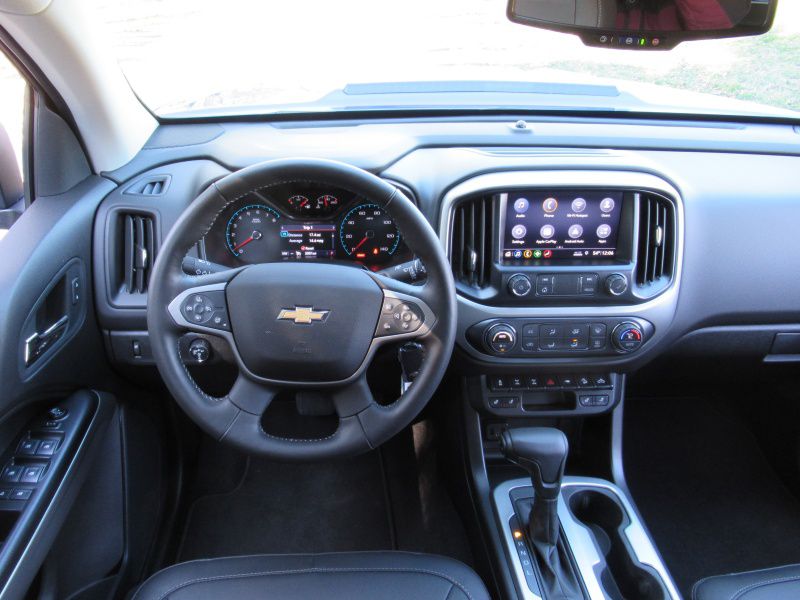
Photo by Brady Holt
Safety and Technology
The Colorado is light on high-tech accident-avoidance technology and driver aids. Chevrolet does offer an optional Safety Package on LT and Z71 models, which includes a forward-collision alert and lane-departure warning, but that’s where the menu ends. The National Highway Traffic Safety Administration awarded the Colorado an overall safety rating of four stars out of five, and the Chevy didn’t perform as well as the Ford in crash tests performed by the Insurance Institute for Highway Safety.
NHTSA also awarded the Ranger four stars, but the truck did extremely well in crash tests performed by IIHS. Only its Marginal headlight rating kept the pickup from qualifying for a Top Safety Pick award. A forward-collision warning withh automatic emergency braking is standard on all models, but you have to step up to the XLT and Lariat to get lane-keeping assist, a lane-departure warning, reverse sensing, and blind-spot monitoring with trailer coverage. Adaptive cruise control is standard on the Lariat.
Ford Ranger
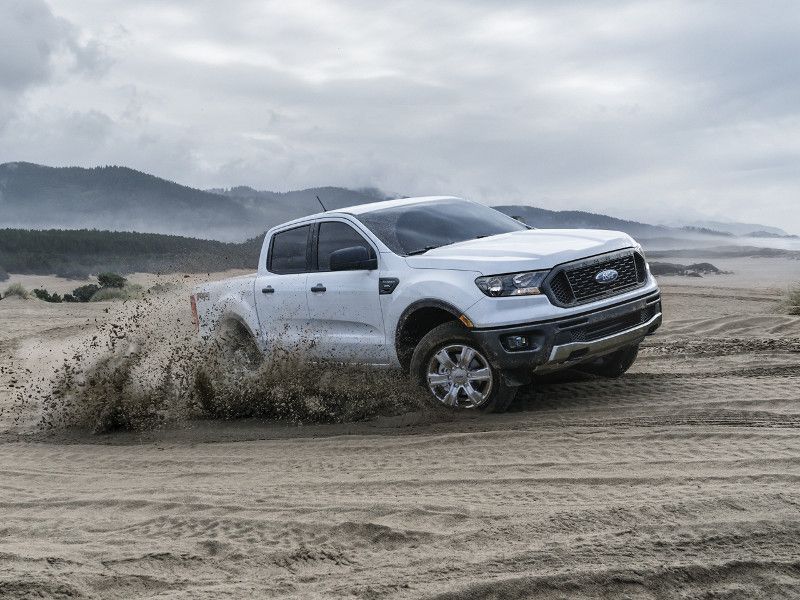
Photo by Ford
Power and Performance
We like choice, and Chevrolet offers three engines on the Colorado. The first is a 200-horsepower 2.5-liter four-cylinder. We recommend stepping up the more desirable 3.6-liter V6, which is packing 308 horsepower at 6,800 rpm and 275 lb-ft of torque at 4,000 rpm. The Colorado (alongside its mechanical twin, the GMC Canyon) also offers the only diesel in this class: a turbocharged 2.8-liter four-cylinder that makes 181 hp and a stout 369 lb-ft of torque at just 2,000 rpm. The four-cylinder engines are backed by a six-speed automatic transmission, while the V6 partners with an excellent eight-speed. The Colorado is quickest with the V6; 0-60 mph takes a little over 6 seconds.
Every Ford Ranger, even the base model, is powered by a smooth 2.3-liter turbocharged four-cylinder mated to an excellent 10-speed automatic. It’s a compelling combination. The engine puts out 270 horsepower at 5,500 rpm and 310 lb-ft of torque at 3,000 rpm. Despite having two fewer cylinders than the Chevy’s V6 the engine makes more torque and delivers it at a much lower rpm. Still, the Ranger is a bit slower than its rival, hitting 60 mph in about 6.8 seconds.
Chevrolet Colorado
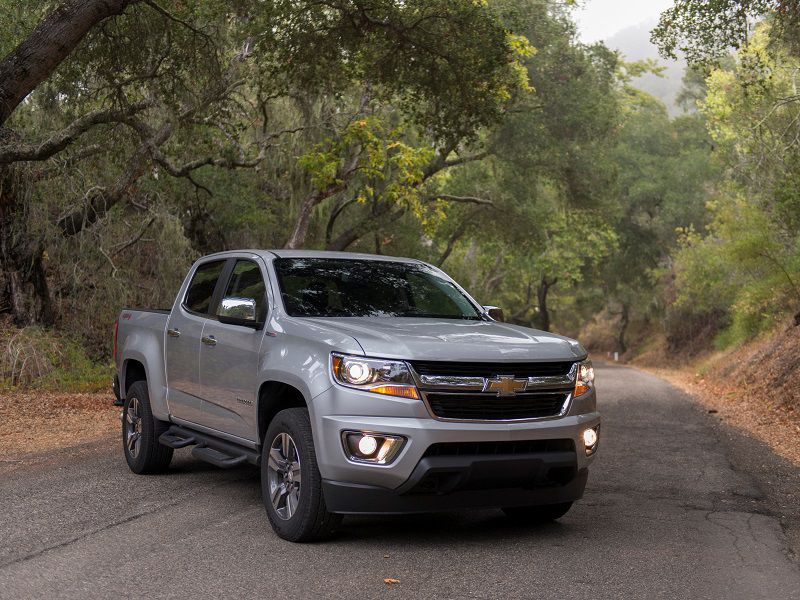
Photo by Chevrolet
Fuel Economy
With its base four-cylinder engine and two-wheel drive, the Chevrolet Colorado’s fuel economy estimates are 20 mpg in the city and 26 mpg on the highway. Four-wheel drive slides those numbers back to 19 mpg city and 24 mpg highway. With the V6 and two-wheel drive, the Chevy is rated at 18 mpg city and 25 mpg highway, or 1 mpg less with 4WD. Diesel trucks score 20 mpg in the city and a class-leading 30 mpg on the highway with 2WD, and 19 mpg city and 28 mpg highway with 4WD.
With 2WD, the Ranger’s fuel economy estimates are 21 mpg city and 26 mpg highway, which is high for this class. The Ranger even and beats the diesel Colorado’s city number. With 4WD, those numbers slip to 20 mpg city and 24 mpg highway. Remember, the Ford’s turbocharged engine makes a lot more power than the Chevy’s base four-cylinder but matches its fuel efficiency.
Tie
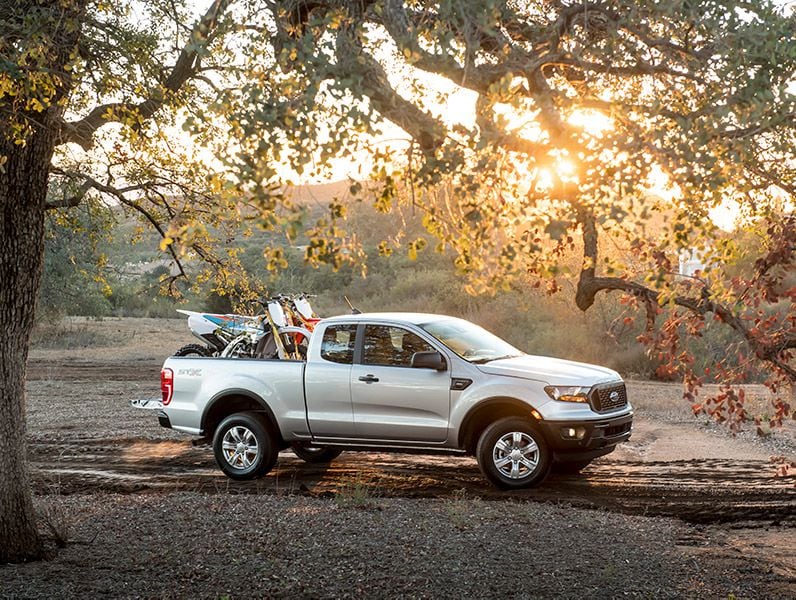
Photo by Ford
Driving Dynamics
Athletic and responsive, the 2020 Chevrolet Colorado is fun to drive and carlike. It feels sturdy and substantial, like a truck should, but it doesn’t feel cumbersome or obese. Its steering is quick and its suspension is well-tuned. Even the 4x4 models don’t knock you around unnecessarily.
Although the Ranger isn’t quite as quick as a V6-powered Colorado, it’ll blow the doors off one powered by the base four-cylinder or diesel engine. The Ford is also more responsive than the Chevy, with superior roadholding than its rival and tighter steering that feels even more carlike. It also rides well and is ultimately more fun to drive.
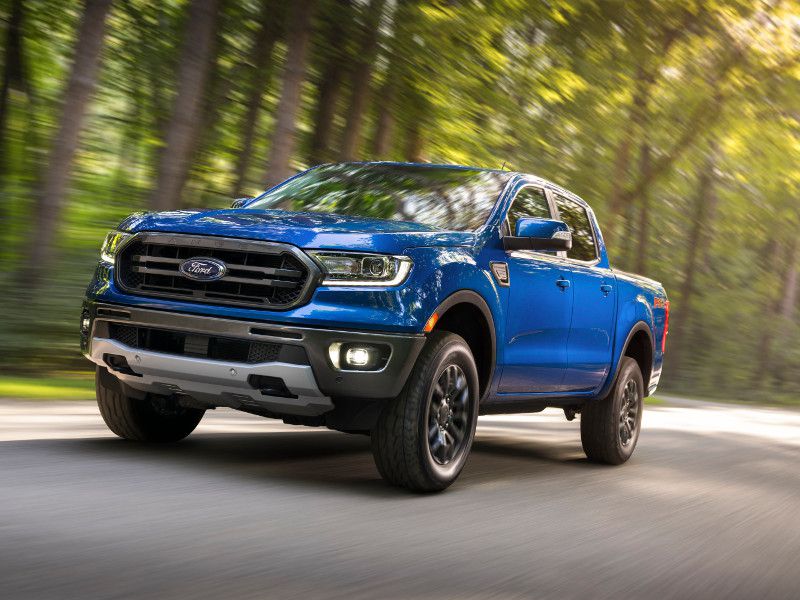
Photo by Ford
Value
The Chevrolet Colorado is the cheaper of the two. Its base price is about $22,500, which makes it one of the most affordable trucks in this class. Step up to the crew cab body style and the more desirable V6 engine, though, and that price jumps above $29,000. Add 4WD and you’re looking at nearly $33,000. The ultimate off-road Colorado, the ZR2, starts at just over $41,000.
With a base price of just under $26,000, the Ford Ranger does cost more than the Chevy, but remember it comes with a far more powerful and sophisticated engine and transmission and more safety equipment. Crew cab models start at about $28,000, which is cheaper than the V6 crew cab Colorado, and adding 4WD takes that number up over $32,000. Again, cheaper than the Chevy. Lather up a Ranger with the top Lariat trim level and the $1,295 FX4 off-road package, and the truck costs just over $43,000.
Ford Ranger
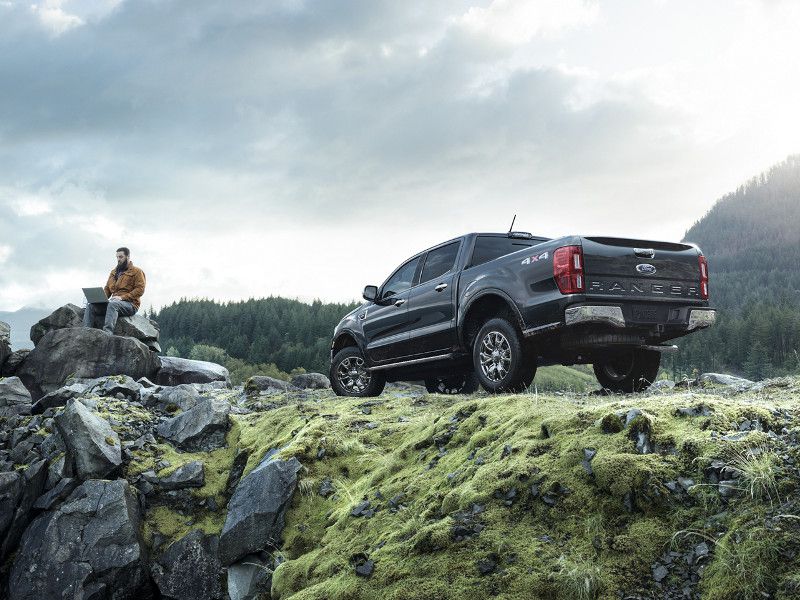
Verdict
This is a close one. Photo finish. Both the 2020 Chevrolet Colorado and 2020 Ford Ranger offer impressive hardware, design, dynamics, and capability. We like the Chevy’s exterior style, low starting price, and wide selection of engines. It’s also comfortable, fun-to-drive, and fuel-efficient, and it offers an excellent infotainment system. We also applaud Chevy for offering a crew cab with a longer 6-foot bed.
But the Ranger wins this battle because of its impressive safety and technology, higher payload capacity, superior driving experience, and better overall value. The fact that every Ranger comes with Ford’s powerful turbocharged engine and 10-speed automatic makes it a tough truck to beat.
Ford Ranger
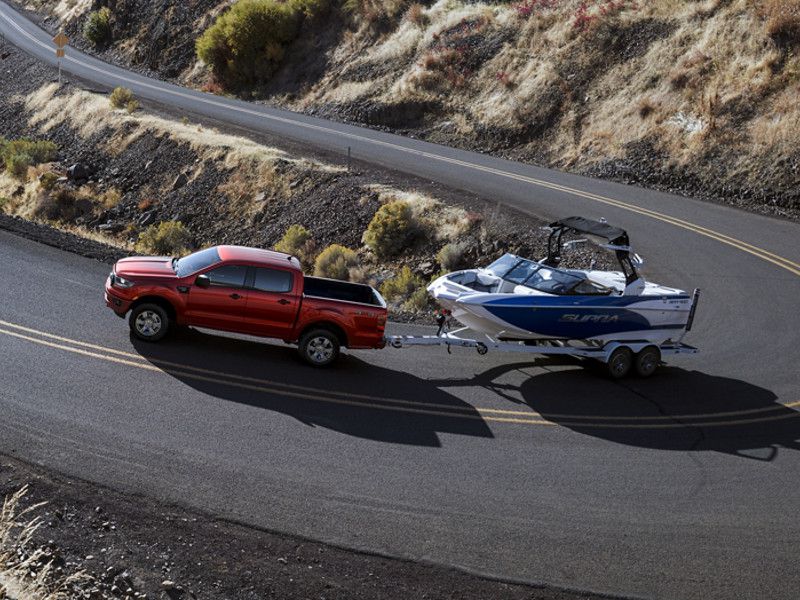
Photo by Ford